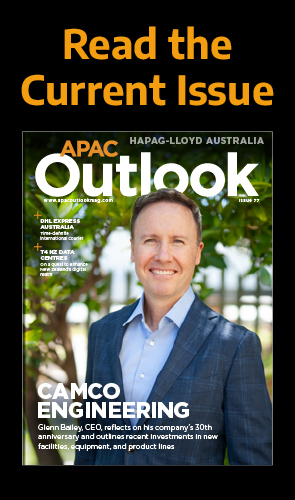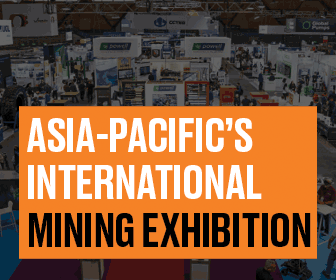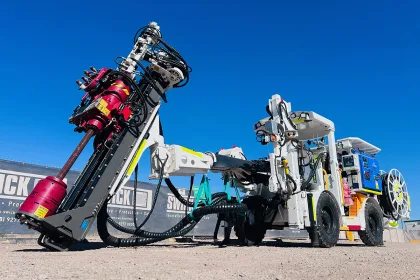Striving for a more self-sufficient and autonomous future, Australia’s semiconductor sector is leveraging its strengths in R&D, innovation, and advanced design capabilities as it seeks to develop a robust national approach.
SPOTLIGHT ON AUSTRALIAN SEMICONDUCTORS
Having had a transformational impact on both technology and science over the years, Australia’s contribution to global innovation cannot be overstated, with notable inventions including the black box flight recorder and the cochlear hearing implant.
What is not widely recognised, however, is how such developments are often enabled by advanced semiconductor technologies.
Australia’s role in the semiconductor sector, although foundational in terms of system design and integration, has been largely overshadowed in recent years by the global dominance of Asian competitors such as the Taiwan Semiconductor Manufacturing Company (TSMC), whose production infrastructure is unrivalled.
As such, Australia has missed the opportunity to gain market share in a rapidly increasing global semiconductor industry, largely due to a shortage of local talent, declining investment, and little consensus surrounding the direction the sector should take.
Despite this, Australia remains a key player in highly specialised areas such as quantum computing, medical devices, and defence technologies, particularly in terms of semiconductor design and system integration as the enabling capability for all these technologies.
Companies like BluGlass, Silanna, and Hendon Semiconductors, alongside start-ups innovating in areas such as photonics, radar systems, and communication technologies, showcase Australia’s ongoing strength in semiconductor technology.
Meanwhile, the Australian and Queensland governments’ recent AUD$940 million investment in PsiQuantum to advance Australia’s quantum computing capabilities demonstrates a growing public interest in supporting deep tech innovation which is underpinned by semiconductor design and material advancements.
To secure a meaningful position in the global semiconductor supply chain going forwards, the New South Wales (NSW) government has identified a need to focus on supporting small and medium-sized enterprises (SMEs), fostering collaboration between academia and industry, and making strategic investments.
Unlike Taiwan, whose high-volume manufacturing has seen it become responsible for 90 percent of the world’s super-advanced semiconductor chips, Australia can thrive by focusing on specialised, high-tech sectors where expertise in systems design and engineering will provide the country with a unique advantage and a competitive edge.
In short, a cohesive national approach, long-term investment, and policy support will be crucial to ensuring Australia’s role in the future of the global semiconductor industry.

Q&A WITH THE SEMICONDUCTOR SECTOR SERVICE BUREAU
We sit down with Nadia Court, Director of the Semiconductor Sector Service Bureau, who outlines the organisation’s crucial role in building consensus for Australia’s semiconductor sector at both state and federal level, carving out a place for it in the global supply chain, and promoting the enabling capabilities of semiconductors across various industries.
Established as a joint venture (JV) in 2022, could you talk us through the primary goals of the Semiconductor Sector Service Bureau?
Nadia Court, Director (NC): In 2020, the NSW Chief Scientist and Engineer commissioned a report into Australia’s semiconductor sector entitled the Australian Semiconductor Sector Study.
The report identified what the sector looked like at the time and the opportunities and challenges it faced. One of the key recommendations was the establishment of the Semiconductor Sector Service Bureau (S3B), a non-profit organisation created to support and grow the sector.
In 2022, a JV was formed between the University of Sydney, Macquarie University, and The University of New South Wales after a call from government for NSW entities to host S3B.
The report also identified some of the challenges faced locally by the start-up community in accessing the global supply chain and understanding wider opportunities within the sector. At the time, there was also a lot of siloed activity and little interconnectivity, so the bureau was established to address some of those concerns.
We have been formed around four key focus areas. The first is semiconductor ecosystem development, where we look to build active collaboration and participation.
The second is to identify and address talent gaps in the industry, and the third is to provide strategic and functional market information to sustain and grow the sector.
Finally, we seek to enable supply chain access to support the sector and entities that don’t have much experience in navigating a complex global marketplace.
In addition, we’ve grown into the role of advocating on behalf of the sector, promoting semiconductors and their enabling capabilities across many areas of Australian industry.
What is your current take on the semiconductor sector in Australia?
NC: By global standards, Australia’s semiconductor sector can be considered nascent. We don’t have the maturity or investment of semiconductor industries overseas, and whilst we have historical strengths, we lack critical mass, particularly in manufacturing.
We have a lot of smaller companies and start-ups in this space, but no big companies. We also have some small teams within multinationals, but Australia is not necessarily well-known when we attend global industry conferences – often, people don’t even recognise we have a semiconductor sector.
In recent years, it’s been exciting to see growth, particularly in areas where our work is quite cutting-edge such as quantum technologies. There’s a lot of research occurring in our universities within this space, meaning we’re now starting to see start-ups emerge.
I would also say there’s been a shift in sentiment since the formulation of S3B; as a community, we now seem to be more united.
One of the challenges we face, however, is that we’re an entity solely funded by the NSW government – there’s no one quite like us in the country. Although we work with people from state, interstate, and federal governments, we don’t necessarily have a national remit.
Because there isn’t any national coordination, the sector can be difficult to navigate as there’s no documented consensus on where we should be heading as an industry or, in the absence of US or Europe-style “Chips Acts”, how we leverage our comparatively modest funding and infrastructure.
In NSW, there’s been an overall focus on training, designing, and establishing paths to production including advanced packaging. The NSW government has also invested in the Advanced Manufacturing Readiness Facility (AMRF), which specifically focuses on advanced packaging for semiconductors, a back-end technique to enable higher performance compared to traditional chips and packaging techniques which would allow the Australian market to capture global market share without competing with the likes of the pure-play foundries in Taiwan.
In short, although challenging, S3B continues to play an important role in coordinating interests from industry, academia, and government on the Australian semiconductor sector in the absence of a national body.
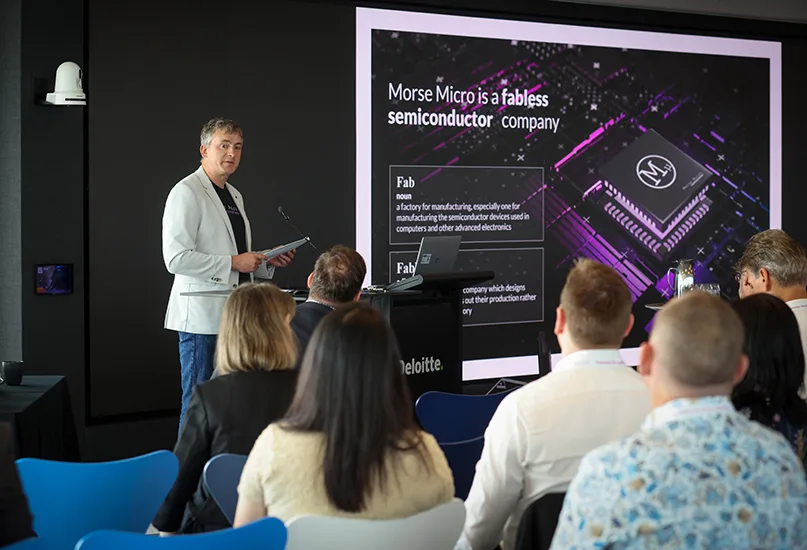
How do you assist your members in building capacity, connectivity, and collaboration throughout the sector, establishing linkages with global entities?
NC: Whilst we build linkages and collaborations throughout the sector through events and workshops, it’s also about making connections between people who have similar interests.
For instance, we will pair up members of the industry – if S3B members express interest in working with academic teams, we can make those connections.
Alongside enabling local connections and collaborations, we’ve recently established a bi-annual multi-project wafer (MPW) and computer-aided design (CAD) access subsidy to build capacity for emerging Australian entities that both commercial and academic applicants can apply for. We’re also supporting low-cost licences to lower barriers for entry into the semiconductor space.
Meanwhile, we support new businesses and start-ups in navigating the supply chain, and we’ve even got a dedicated role to facilitate access to local and international capabilities and products for new entrants or companies unfamiliar with the semiconductor industry. We’re also encouraging our university partners to ramp up training in this area as we see the demand for new talent amongst the workforce increase.
In Australia, there’s not a huge knowledge of the semiconductor sector because it is so small, so we’re also educating the investment community.
Last year, we co-hosted Semiconductor Australia, a conference and sector showcase in collaboration with one of our industry partners, BluGlass. The event was centred around educating investors about the emerging semiconductor opportunities in Australia.
In terms of linkages overseas, as well as helping people navigate supply chains and make introductions, we also represent the sector globally at conferences, helping to build international linkages with academic, research, and industry entities and promoting the strengths of the Australian sector.
How extensively is S3B involved in contributing to government policy and regulatory frameworks which may affect the Australian semiconductor industry?
NC: We’re continuing to refine our role at both state and federal government level by identifying a consensus on the direction the Australian semiconductor industry should take.
Currently, there are myriad options – we could go down the route of manufacturing, packaging, or design, and each state has a different area of focus and established expertise in each of these fields.
Part of our role is thinking about how we build a consensus and bring people together from across the country to discuss what the industry should look like and the opportunities this brings to the Australian economy.
Whilst I’ve already mentioned AMRF, it’s important to note that although this is an initiative of the NSW Government, we see this as a nationally relevant piece of infrastructure that’s going to be important to all states across the country.
As such, AMRF presents an opportunity to unite interested parties who can provide input as to what capability and technology outputs are of strategic importance and relevance to the domestic market.
As it’s going to be focused on advanced packaging, we see a real opportunity to leverage Australia’s existing strengths in design and systems engineering.
Part of our role is being a voice for the industry, so when the government are making investment decisions and deciding on areas of focus, we’re on hand to provide our insight into the semiconductor sector.
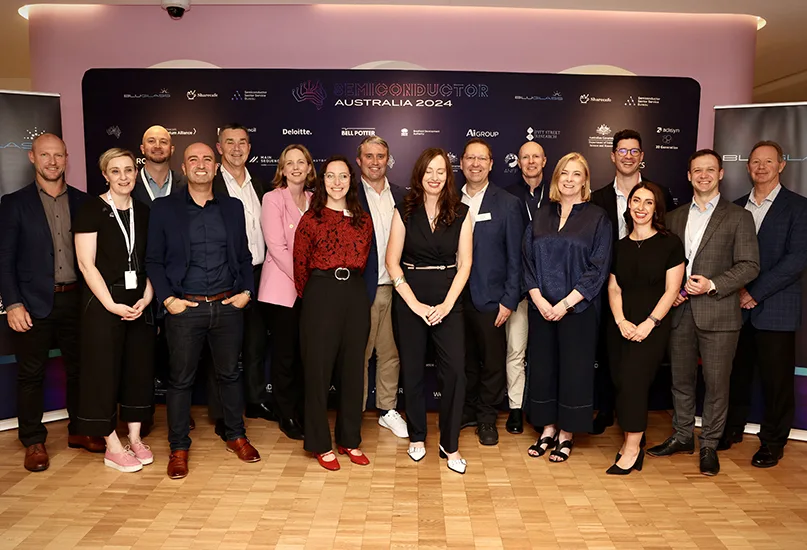
Could you talk us through how your recent 2024-27 strategic plan provides a framework for increasing the commercial impact of semiconductors throughout the sector?
NC: Our 2024-27 strategic plan was initially funded to focus on four key areas, namely:
- Developing a connected ecosystem.
- Cultivating a thriving talent pool.
- Distributing influential market information.
- Enabling an active and accessible supply chain.
Whilst the focus of the S3B strategy continues to be in these areas, we’ve also been able to build greater relationships with government at both state and federal level.
As I mentioned, we’re advocating on behalf of the industry and building consensus, helping AMRF to develop in line with national priorities, implementing initiatives to drive activity, and lowering barriers to entry for people wanting to get into the sector.
How can we support emerging technologies developed either by universities or in our start-ups? By getting products to market and enabling first proof-of-concept prototypes whilst educating key members of the community on the importance of the semiconductor sector.
It’s all about ensuring we represent the whole sector so we can grow and build a thriving, globally connected industry in Australia. To do that, we need to continue to communicate the global significance of semiconductor technology and influence national coordination.
What are S3B’s key priorities going forwards, particularly in terms of supporting priority areas such as defence and critical technologies?
NC: It’s all about distinguishing semiconductors as the ultimate underpinning and enabling component, capable of bolstering national defence capabilities and supporting advances in fundamental areas such as artificial intelligence (AI), robotics, quantum mechanics, and clean energy, to name a few.
Australia has identified key areas of focus, such as robotics, quantum technologies, and advanced manufacturing.
Our priorities moving forwards, particularly this year, are about driving more activity, building capability, and leveraging our existing strengths.
Australia has expertise in systems engineering, and we’ve got a lot of companies like Cochlear and ResMed who are recognised globally for their ability to leverage these strengths. Of course, one way to enable systems is to utilise semiconductor technologies.
With Australia’s existing strengths in mind, it’s about leveraging semiconductors to build and grow our industries.
Some of S3B’s ongoing activities are therefore about training and building increased design capability, not necessarily to support the semiconductor industry, but those in systems engineering spheres who could potentially benefit from custom chips, providing them with a competitive edge.
Often, the only way to do that this is to build capability by enabling activity, so that’s where a lot of our work is focused.
This comes in the form of workshops where we try to bring people together to make sure there’s a melting pot of people from different backgrounds. By enabling an environment where people can share ideas, we can lower barriers to entry to get things started.
Are you optimistic for the future of Australia’s semiconductor sector?
NC: I’m cautiously optimistic. It’s interesting to watch what’s happening in the global semiconductor industry at the moment, which has seen a big focus on onshoring and huge investments in the US and Europe to shore up supply chains and build sovereign capacity.
We haven’t yet seen that same level of interest from the Australian government, which is partly why I remain cautiously optimistic.
Government recognition of the sector is important as we’re currently unable to compete with the likes of TSMC and a lot of our Asian neighbours who have very high-volume manufacturing capabilities. When we don’t have much manufacturing infrastructure in place, we can’t just build it from scratch.
So, we need to look at what we can do, our areas of strength, and existing opportunities. As a country, we need to come together to develop and invest in a cohesive semiconductor industry. We see opportunity for coordination, policy, and incentives to encourage activity and investment into the sector.
It’s interesting talking to international colleagues who recognise Australia’s strengths. There are certainly opportunities that we could leverage to build the sector and carve out a place for it in the supply chain, but it requires coordination and collaboration with government.
Although challenging, because we have strengths in areas such as design, niche manufacturing, and leading-edge technologies, we must position ourselves to move in the right direction for the sector.
We are very optimistic about continuing to build a competitive semiconductor industry for Australia.
Finally, what unique opportunities can you see emerging for Australia’s semiconductor sector going forwards?
NC: AMRF is a real opportunity for the country, and the fact there is already a commitment from the NSW government to invest in the facility is extremely positive.
Meanwhile, there is a lot of interest in building sovereign capability in Australian manufacturing overall. The view that S3B has formed is focused on capitalising on advanced packaging and market growth in chiplet technologies as an opportunity. As a relatively nascent area with not a lot of big suppliers, the move towards advanced packaging and chiplets is a real shift within the industry.
There’s a real an opportunity for new entrants into this market both in manufacturing and design.
There are also opportunities for Australia in the forward-thinking technology space, which is something we as an organisation can provide support for in terms of offering advice and expertise.
Our team has first-hand knowledge of emerging technologies within the sector, so we can provide technical expertise to industry and government and advise them on what opportunities they should be seeking out.






